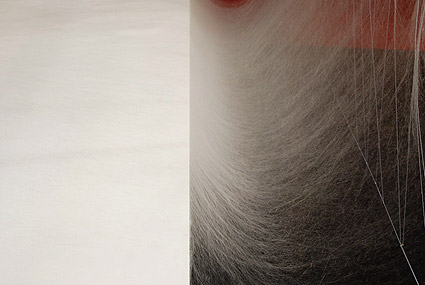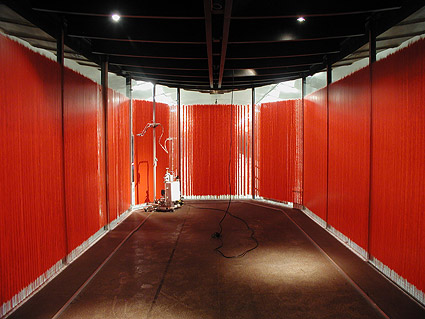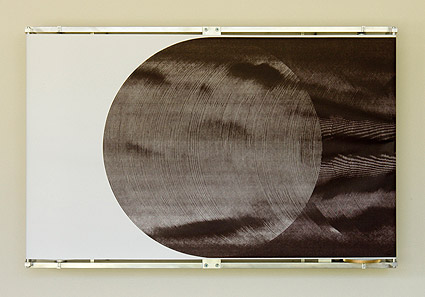I encountered Stockholm-based artist Albin Karlsson‘s work at the recent Icon Experiment, an island of interesting projects of an otherwise often ghastly design expo at the ExCeL center in London’s uber-gentrified Docklands.
 1g/min spinning a fine web
1g/min spinning a fine web
Among works by Jurgen Bey, Studio Glithero and Julia Lohmann, his piece was sitting somewhat on the fringe, but was quite literally becoming increasingly present because it was spinning a web of fine glue-fibers across the stand. Asking what it was, I was told that the work, titled 1g/min, is actually a clock, dripping 1 gram of hot glue per minute from a rotating nozzle.
Over time, a stalagmite-like structure arisis which physically visualizes the time that has passed. The material quality of the object is somewhat of a honeycomb, yet there’s often that whitish web attached which also gives it a delicate cobweb-like appearance. Time lapse-videos of the clock in progress are wonderful to watch and say a lot about the possibilities procedural and generative sculpture.
Time-lapse video of 1g/min
Later I had the chance to talk to lovely Albin and he told me that the main body of his work so far had been revolving around timepieces. He has explored measuring and displaying the passing of time in many different ways. He says “Time fascinates me both as physical phenomena and as a philosophical and personal matter. The sense of time have changes during the years. The changes go hand in hand with the technical inventions to measure it.”
 Minuterna, installed in the Stockholm subway
Minuterna, installed in the Stockholm subway
Another good example for such a time-based work is the public-space installation Minuterna, a robotic arm at Stockholm’s Odenplan subway station, which in 129600 minutes (3 months) had several panes of glass covered with the same number of dots, eventually obscuring the whole surface. This process must have given commuters such an interesting sense of how time passes. Especially since it was located in a highly controlled urban environment which we, as opposed to a forest for instance, usually do not associate with change.
 Thermopaper 2
Thermopaper 2
A third work on this subject sits probably kind of in between the previous two and is called Thermopaper 2 in which a big sheet of thermochromic paper is slowly wound from one spool to another. A rotating heat source draws a circle on the paper, one cycle per minute. However, since the sheet is constantly in motion, the circle can never be completed and instead becomes a spiral which grows longer and more intricate as time goes by, in a sense letting time become a medium as such on the paper.
More images from the event to be found here.
